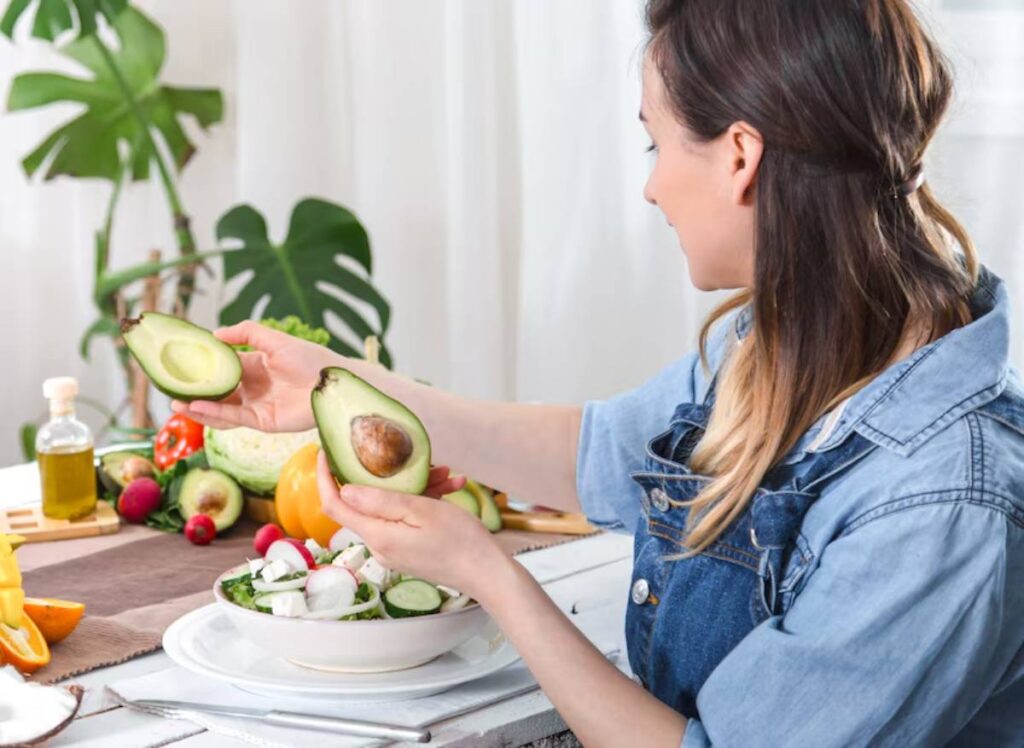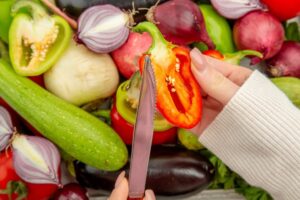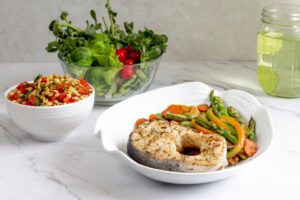The Health & Wellness Blog

Anti-Inflammatory Meal Prep Tips
Meal prepping isn’t only a time-saver in the kitchen, but a health-saver too. By being mindful of your ingredients and your meal plans, you improve your body’s defenses against inflammation. How you can Meal Prep Anti-Inflammatory Foods. It slashes processed foods and makes healthful choices simple all week.
Your fridge can, with a little planning, reduce joint pain, increase energy and promote digestion. And the food will taste good!
Why Anti-Inflammatory Meal Prep Matters
Chronic inflammation connects to many health problems. These include fatigue, weight gain, digestive issues, and joint stiffness. It can also lead to serious conditions like heart disease or autoimmune flare-ups. Unfortunately, the standard grab-and-go meals and processed snacks only add fuel to the fire.
This is where anti-inflammatory meal prep comes in. You control your meals by focusing on whole foods. This includes leafy greens, omega-3-rich ingredients, antioxidant-packed veggies, and healthy fats. At the same time, it cuts down on inflammatory triggers. These include refined carbs, added sugars, and artificial ingredients.
Prepping meals in advance helps protect your health. It’s especially useful on busy or stressful days when you have less energy to make good choices.
Key Benefits of Prepping Anti-Inflammatory Meals
1. Less Reliance on Processed Foods
Meal prep keeps you from grabbing last-minute takeout or packaged meals. These often have preservatives, added sugars, and inflammatory oils.

2. Better Blood Sugar Control
Preparing meals with fibre, healthy fats, and protein helps your body digest food slowly. This keeps your blood sugar and energy levels steady all day.
3. Improved Gut Health
Eating fibre-rich veggies, legumes, and fermented foods helps good bacteria grow. This supports a healthier gut microbiome.
4. Reduced Pain and Inflammation Over Time
Eating fewer inflammatory foods gives your body more ability to heal. This is especially clear for people with arthritis or autoimmune conditions.
5. Saves Time and Energy
You’ll save hours in the kitchen each week by cooking in batches and organizing ingredients. No more nightly stress about “what’s for dinner.”
Meal Prep Basics for an Anti-Inflammatory Lifestyle
Stock Up on Anti-Inflammatory Staples
Build your grocery list around nutrient-dense foods that reduce inflammation naturally:
- Leafy greens: spinach, kale, arugula
- Cruciferous veggies: broccoli, cauliflower, cabbage
- Colourful fruits: berries, cherries, oranges
- Healthy fats: avocado, olive oil, nuts, seeds
- Omega-3 sources: salmon, mackerel, flaxseeds, chia seeds
- Herbs and spices: turmeric, ginger, garlic, cinnamon
Choose the Right Cooking Methods
Stick to roasting, steaming, baking, or light sautéing. Avoid deep-frying or heavy pan-frying, as these can introduce inflammatory compounds.

Use Glass Containers for Storage
Ditch plastic containers with BPA and opt for glass, which doesn’t leach chemicals into your food and keeps meals fresher longer.
Sample Anti-Inflammatory Meal Prep Plan
Here’s a basic structure to inspire your weekly prep:
Proteins (Choose 2–3):
- Grilled salmon with turmeric and lemon
- Roasted chicken thighs with garlic and rosemary
- Lentil stew with coconut milk and curry spices
Veggie Sides (Choose 3–4):
- Roasted broccoli and carrots with olive oil
- Sautéed kale with garlic and red pepper flakes
- Sweet potato wedges
- Shredded cabbage slaw with apple cider vinaigrette
Whole Grains or Complex Carbs (Choose 2):
- Quinoa
- Brown rice
- Roasted chickpeas
Add-Ons & Dressings:
- Tahini lemon sauce
- Homemade pesto
- Hummus
- Sliced avocado (add just before eating)
Mix and match these to create balanced lunches and dinners throughout the week. Keep breakfast and snacks simple with overnight oats, chia pudding, fruit, or a boiled egg with greens.
Common Mistakes to Avoid
Mistake #1: Skipping Spices
Anti-inflammatory spices like turmeric, ginger, and garlic are easy to add and powerful in effect. Use them generously in marinades, soups, or roasted dishes.
Mistake #2: Forgetting Healthy Fats
Many people choose low-fat meals during prep. However, healthy fats are important. They come from nuts, seeds, olive oil, and fatty fish. These fats help absorb fat-soluble vitamins and reduce inflammation.
Mistake #3: Cooking Too Far in Advance
Not all meals stay fresh for the entire week. For best results, prep 3–4 days ahead and freeze a few meals if you’re cooking for the full week.
Mistake #4: Using Store-Bought Sauces
Even “healthy” sauces can contain inflammatory oils and sugar. Make your own with olive oil, lemon juice, tahini, mustard, herbs, and vinegar.
Expert Tips to Level Up Your Meal Prep
1. Batch Cook Base Ingredients
Instead of preparing individual meals, cook big batches of grains, proteins, and veggies. Store them separately to build different meals throughout the week and avoid food fatigue.

2. Freeze Ingredients in Meal-Sized Portions
Soups, stews, roasted veggies, and even cooked proteins can be frozen in glass containers or silicone freezer bags for busy weeks.
3. Label Everything
Use masking tape or labels to write the meal name and prep date. This helps reduce waste and keeps you on track.
4. Pre-Chop Produce for Quick Assembly
Prepping vegetables can save you time. Wash and chop them ahead of time. Then, making a quick stir-fry or salad is much easier.
Advanced Insights: How Food Choices Shape Inflammatory Pathways
Inflammation is regulated by complex chemical messengers in the body. Certain foods activate these messengers, while others suppress them. For example:
- Processed seed oils, such as soybean and corn oil, contain a lot of omega-6 fatty acids. When we have too much of them, they can cause inflammation.
- Omega-3 fatty acids, on the other hand, promote resolution of inflammation through specialised molecules called resolvins and protectins.
Meal prepping gives you full control over these inputs. It’s not just about eating clean—it’s about creating an internal environment that supports healing and reduces your risk of chronic disease.
Prep with Purpose, Heal from the Inside Out
Anti-inflammatory meal prep doesn’t need to be about perfection or complexity. It’s about consistency and being intentional. With a few hours of your time each week, you can prepare meals that nourish, energize and help fuel the body’s natural systems of healing.
Avoiding inflammatory ingredients is part of that. Emphasise whole, healing foods. It will increase your energy, stimulate your digestion, and enhance your mood. And the best part? You’ll never have to wonder, “What’s for dinner?” again.









